Ask any skilled athlete or enterprise govt how they grew to become profitable, they usually’ll let you know they mastered a course of. By determining which habits led to success and which didn’t, they improved their effectivity and productiveness.

However implementing a course of right into a enterprise, division, or perhaps a crew is a very totally different animal than honing your private course of. With so many transferring components, how do you monitor and refine every facet of your online business course of?
Information move diagrams present a simple, environment friendly approach for organizations to know, good, and implement new processes or methods. They’re visible representations of your system, making it straightforward to know and prune.
Earlier than we dive into how knowledge move diagrams can assist refine any of your online business methods or processes, let’s go over what precisely it’s.
What’s an information move diagram (DFD)?
An information move diagram (DFD) is a visible illustration of the knowledge move via a course of or system. DFDs aid you higher perceive course of or system operations to find potential issues, enhance effectivity, and develop higher processes. They vary from easy overviews to complicated, granular shows of a course of or system.
DFDs grew to become standard within the Seventies and have maintained their widespread use by being straightforward to know.
There are two sorts of DFDs — logical and bodily. Logical diagrams show the theoretical technique of transferring data via a system, like the place the info comes from, the place it goes, the way it modifications, and the place it finally ends up.
Bodily diagrams present you the sensible technique of transferring data via a system. It will possibly present how your system’s particular software program, {hardware}, information, staff, and prospects affect the move of data.
You possibly can both use logical or bodily diagrams to explain that move of data. You may as well use them in conjunction to know a course of or system on a extra granular stage.
The Advantages of Information Circulate Diagrams
DFDs are visible representations that may assist nearly anybody grasp a system‘s or course of’ logic and features. Except for being accessible, they supply much-needed readability and enhance productiveness. This is how.
Accessibility
As a result of visible data is simpler to digest, DFDs sometimes clarify complicated ideas higher than blocks of textual content can.
Visible displays of how a course of works also can maintain individuals’s consideration longer — making it simpler to retain the knowledge.
Readability
DFDs make clear the methods and processes vital to your crew to do their greatest work. Whether or not implementing a brand new company-wide system or refining a division’s current course of, a DFD will get you and your crew on the identical web page.
Creating DFDs gives you readability about enterprise operations, too. A clearer understanding allows you to refine and monitor your online business processes with much less friction.
Productiveness
The accessibility and readability created with DFDs will depart much less room for error. Your crew will higher grasp methods and processes as a result of they perceive them.
Higher understanding — paired with a repeatable course of — will doubtless enhance crew effectiveness and productiveness.
On a broader stage, DFDs can assist you streamline your online business operations. When mapping out your processes, you‘ll achieve insights into what does and doesn’t work.
These insights assist enhance you and your crew’s productiveness. As a bonus, you may share any greatest practices throughout departments.
Information Circulate Diagram Symbols
Earlier than utilizing a DFD, it is advisable to know the symbols used to explain it.
Information move diagram symbols are standardized notations, like rectangles, circles, arrows, and short-text labels. These symbols signify a system’s knowledge move path, inputs, outputs, storage factors, and sub-processes.
4 widespread strategies of notation are utilized in DFDs: Yourdon & De Marco, Gene & Sarson, SSADM, and Unified.
All use the identical labels and related shapes to signify the 4 principal components of a DFD — exterior entity, course of, knowledge retailer, and knowledge move.
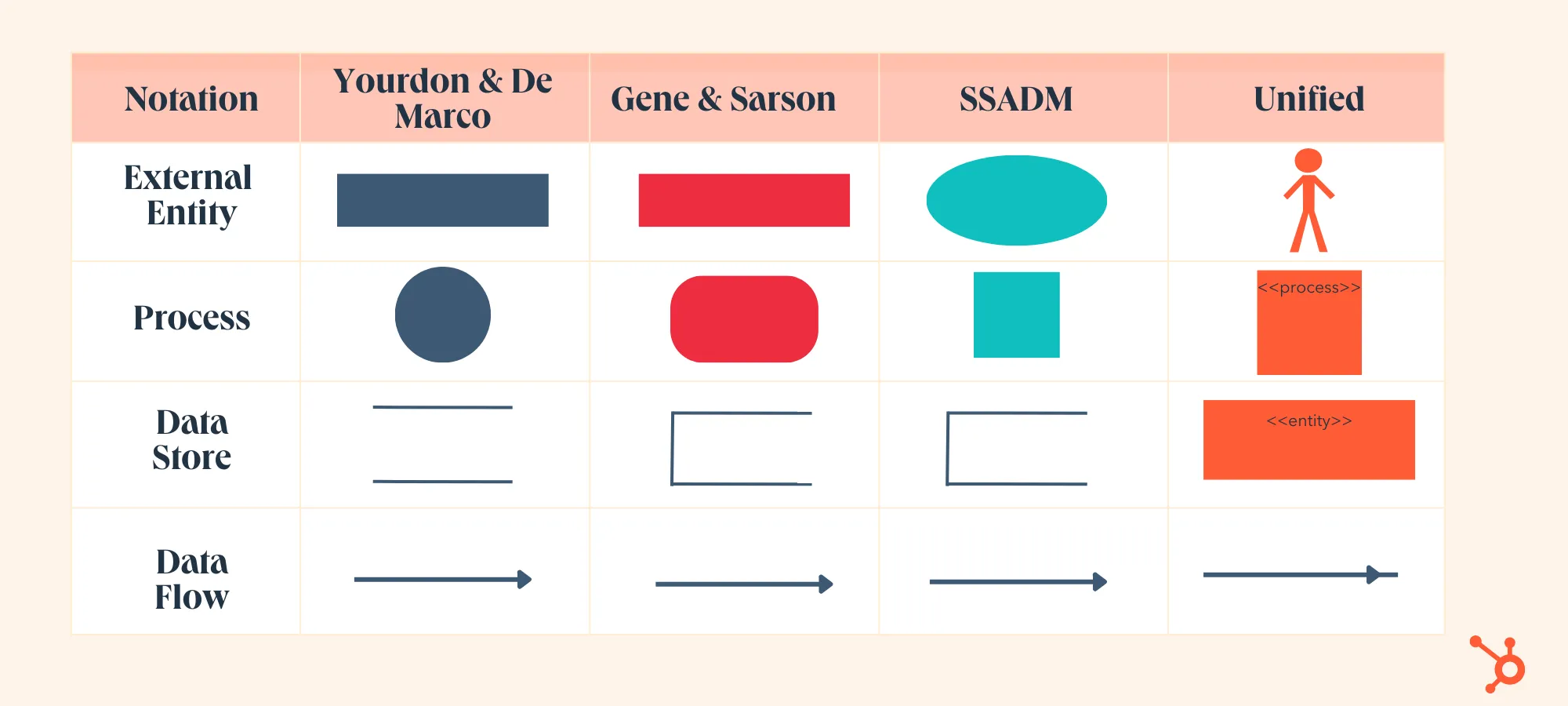
1. Exterior Entity
Exterior entities — that are also called terminators, sources, sinks, or actors — are exterior methods that ship or obtain knowledge to and from the diagrammed system.
They’re both the sources or locations of data, so that they’re often positioned on the diagram’s edges.
Exterior entity symbols are related throughout fashions apart from Unified, which makes use of a stick-figure drawing as a substitute of a rectangle, circle, or sq..
2. Course of
Course of is a process that manipulates the info and its move by taking incoming knowledge, altering it, and producing an output. A course of can do that by performing computations and utilizing logic to kind the info or change its move of path.
Processes often begin from the highest left of the DFD and end on the underside proper of the diagram.
3. Information Retailer
Information shops maintain data for later use, like a file of paperwork that’s ready to be processed. Information inputs move via a course of after which via an information retailer, whereas knowledge outputs move out of an information retailer after which via a course of.
4. Information Circulate
Information move is the trail the system’s data takes from exterior entities via processes and knowledge shops. With arrows and succinct labels, the DFD can present you the path of the info move.
DFD Ranges
DFDs can vary from easy overviews to complicated, granular representations of a system or course of with a number of ranges, beginning with stage 0.
The most typical and intuitive DFDs are stage 0 DFDs, additionally referred to as context diagrams. They’re digestible, high-level overviews of the move of data via a system or course of, so nearly anybody can perceive it.
Degree 0: Context Diagram
This DFD stage focuses on high-level system processes or features and the info sources that move to or from them. Degree 0 diagrams are designed to be easy, simple overviews of a course of or system.
Degree 1: Course of Decomposition
Whereas stage 1 DFDs are nonetheless broad overviews of a system or course of, they’re additionally extra detailed — they break down the system’s single course of node into subprocesses.
Degree 2: Deeper Dives
The subsequent stage of DFDs dives even deeper into element by breaking down every stage 1 course of into granular subprocesses.
Degree 3: Rising Complexity
Degree 3 and higher-numbered DFDs are unusual. That is largely because of the quantity of element required, which defeats its unique function of being straightforward to know.
Information Circulate Diagram Examples
Professionals in varied industries, like software program engineering, IT, ecommerce, and product administration & design, can use DFDs to raised perceive, refine, or implement a brand new system or course of.
However what does an information move diagram appear to be in observe — and the way does it assist your online business? Listed here are three examples that will help you contextualize DFDs’ affect.
1. Degree 0 DFD
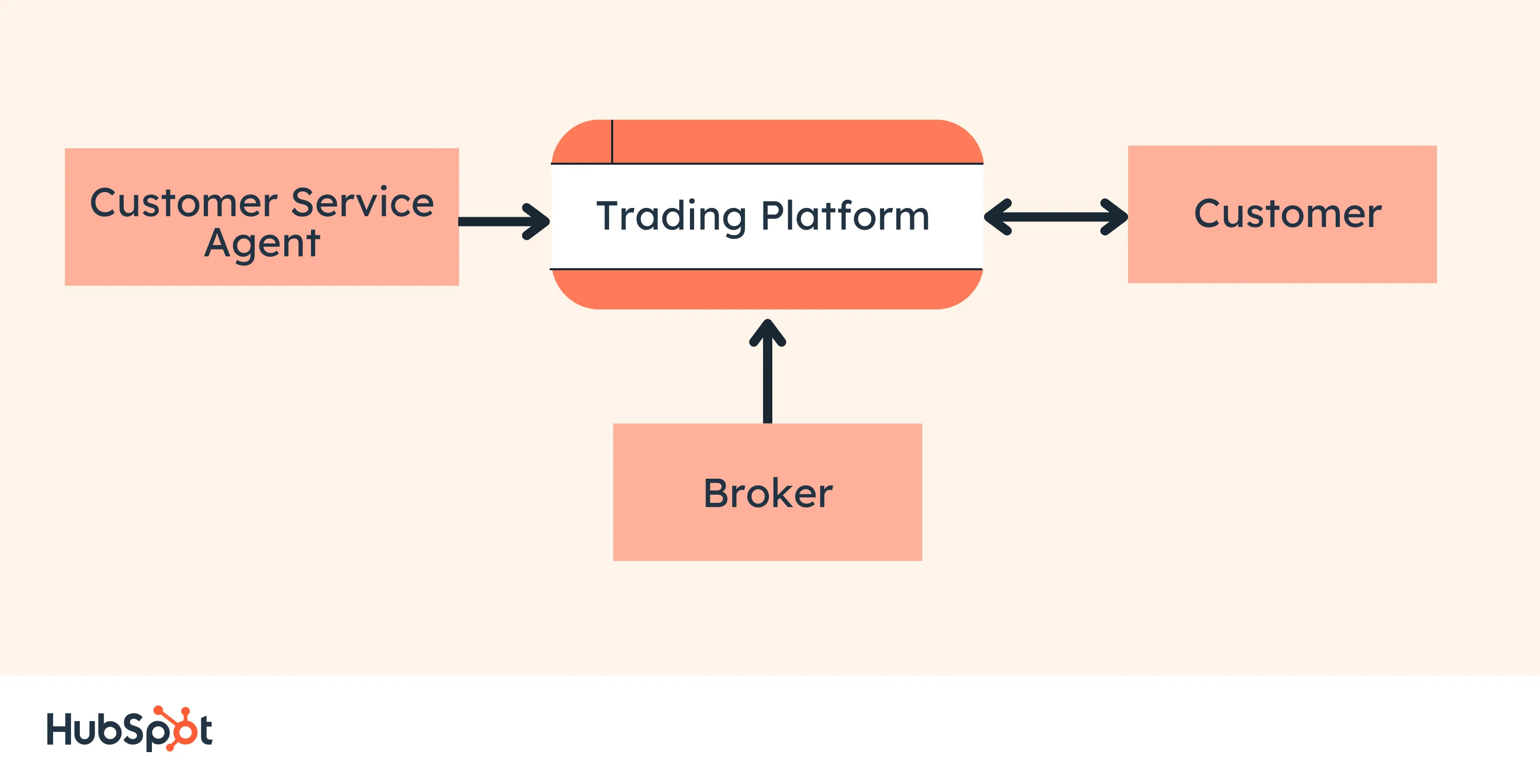
This Degree 0 DFD gives a contextual map of a securities buying and selling platform.
Information flows in a single path from the customer support assistant and the dealer to the platform. It additionally flows in two instructions from prospects to the platform and again once more.
2. Degree 1 DFD
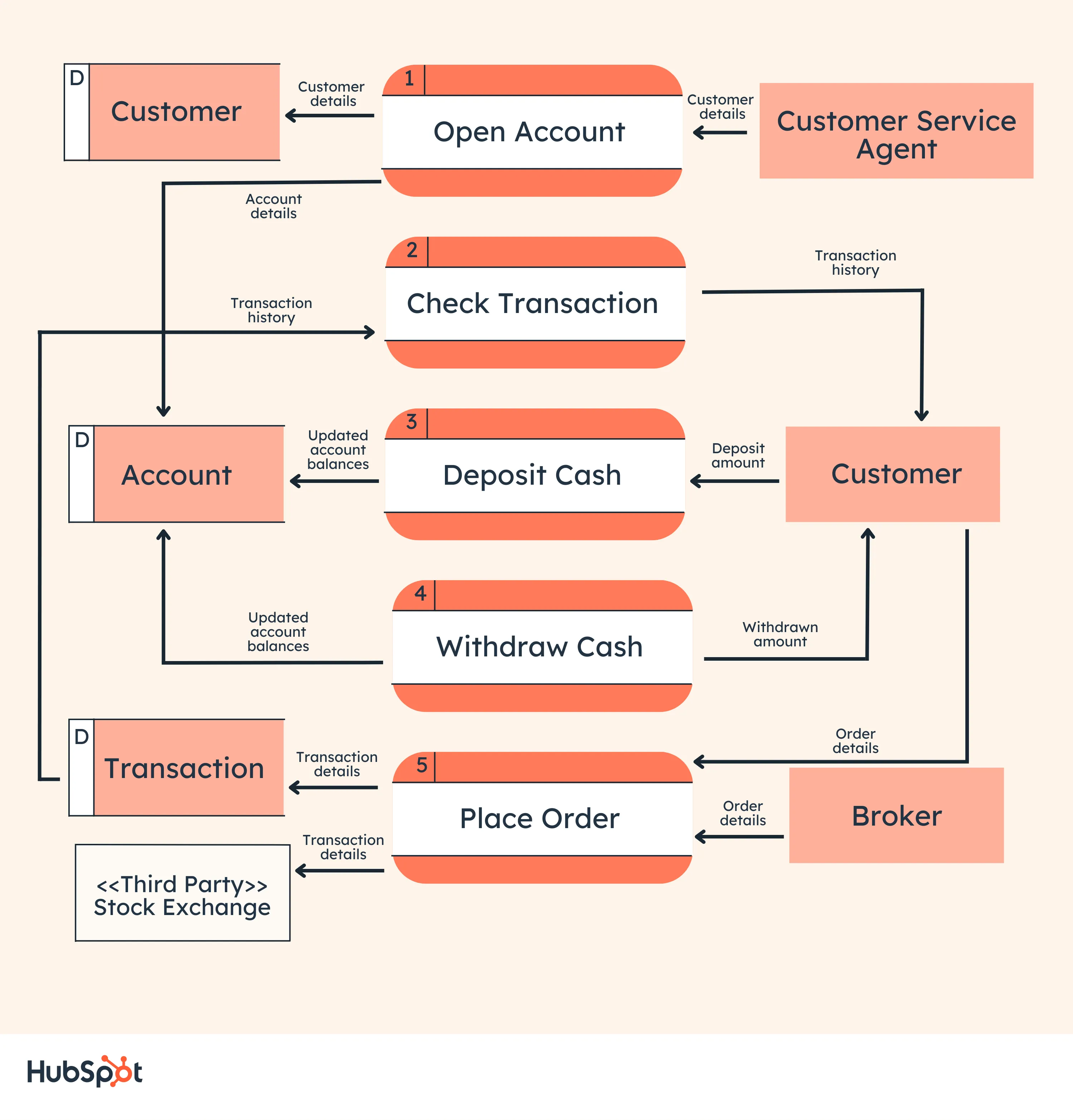
This Degree 1 DFD breaks down the client course of in additional element, increasing it to incorporate account creation, money withdrawals, and eventual securities transactions.
3. Degree 2 DFD

This Degree 2 DFD decomposes the “Place Order” course of to contextualize the steps required to position an order — both by a buyer or by a dealer.
It even accounts for a third-party inventory trade heart the place transaction particulars are forwarded after an order is positioned.
Learn how to Make a Information Circulate Diagram
- Know the fundamentals.
- Choose a system or course of.
- Categorize associated enterprise actions.
- Draw a context DFD.
- Verify your work.
- Create youngster diagrams.
- Increase processes into Degree 1 DFDs.
- Repeat as wanted.
1. Know the fundamentals.
Earlier than you begin mapping out knowledge move diagrams, it is advisable to comply with 4 greatest practices to create a legitimate DFD.
- Every course of ought to have at the least one enter and one output.
- Every knowledge retailer ought to have at the least one knowledge move in and knowledge move out.
- A system’s saved knowledge should undergo a course of.
- All processes in a DFD should hyperlink to a different course of or knowledge retailer.
2. Choose a system or course of.
Start by choosing a particular system or course of you wish to analyze. Whereas any system or course of might be changed into a DFD, the bigger the method, the extra difficult the diagram and the tougher it will likely be to contextualize.
Wherever doable, begin with a small operate or course of you’re trying to enhance.
3. Categorize associated enterprise actions.
Subsequent, categorize all actions associated to this course of into exterior entities, knowledge flows, processes, and knowledge shops.
Think about a restaurant meals ordering system. Prospects are exterior entities, the meals ordering system is a course of, and the interplay between prospects and the system (which matches in each instructions) is the move.
Additionally value noting? The ordering system doubles as an information retailer, so for an SSADA mannequin, this implies drawing it as a rectangle with rounded corners with two horizontal traces inside to signify its twin operate.
4. Draw a context DFD.
Now it’s time to begin drawing. DFDs might be created by hand, utilizing free templates accessible on-line, or through browser extensions.
Start with a easy, Degree 0 DFD: Begin along with your course of or system, then map all primary connections and flows.
5. Verify your work.
Earlier than diving into extra complicated DFDs, examine the work you’ve already finished to verify it’s correct and full.
If you happen to’ve missed (or added) a course of, entity, or move, your next-level DFDs could not make sense, and you might be compelled to begin over.
6. Create youngster diagrams.
For every course of or system described in your Degree 0 DFD, create a brand new youngster diagram with its personal entities and flows. Finally, you need to use these youngster diagrams to attach processes collectively.
7. Increase processes into Degree 1 DFDs.
Utilizing your youngster diagrams, you must map extra in-depth connections between every course of.
Within the case of our restaurant instance, this might imply digging deeper into the meals ordering system and its connection to suppliers, managers, prospects, and kitchen workers.
8. Repeat as wanted.
Every course of — irrespective of how giant or small — might be reimagined as a Degree 0 context diagram, and the cycle can start once more.
Repeat these steps as wanted to create as many DFDs as required, or break processes down additional to develop Degree 2, 3, and so forth. DFDs.
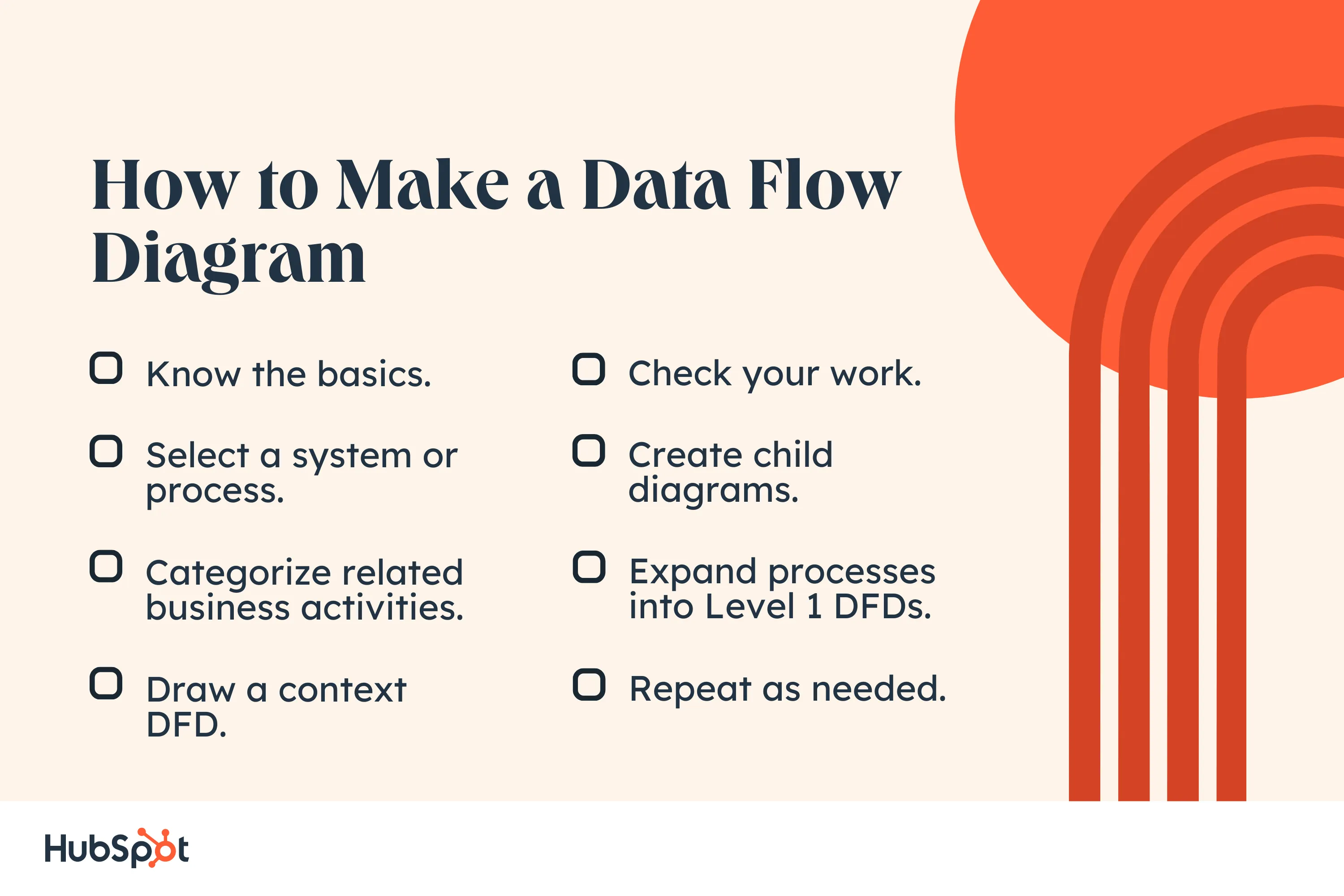
Perfecting Your Course of
Whereas there’s no such factor as a “good” knowledge move diagram, continued observe can assist streamline the method and provide vital perception into what’s working, what isn’t, and the place your online business could make impactful enhancements.
Your greatest wager? Bear in mind the rule: Preserve it easy. Begin with context, construct out related processes, and repeat as wanted to map key connections, flows, and entities throughout your group.


![Download Now: An Introduction to Data Visualization for Marketers [Free Guide]](https://no-cache.hubspot.com/cta/default/53/6ecf26a9-faff-4c16-a2d4-b70751ce8b65.png)
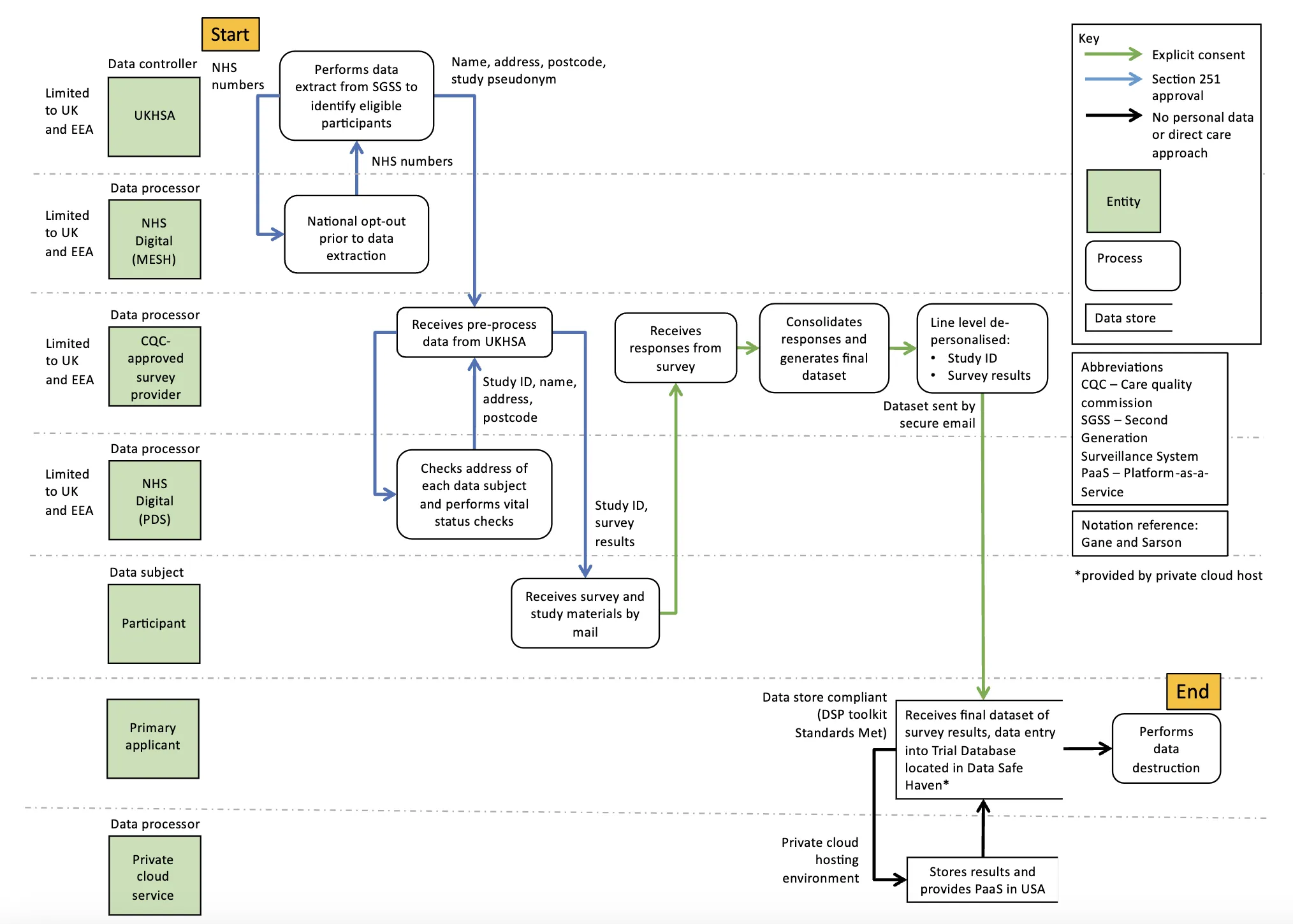
![Blog - Data Visualization [List-Based]](https://no-cache.hubspot.com/cta/default/53/2f02d8fe-c9b0-4078-a3ae-5831c892fbd0.png)